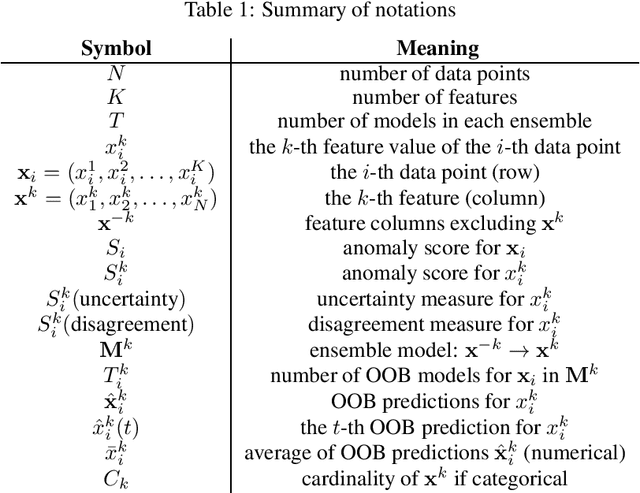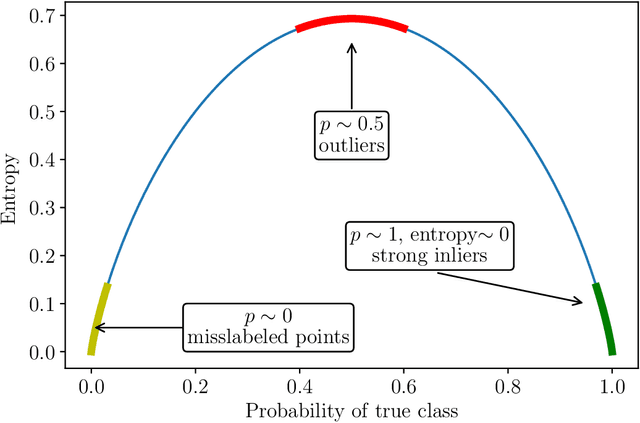Eric Ringger
Out-Of-Bag Anomaly Detection
Sep 20, 2020



Abstract:Data anomalies are ubiquitous in real world datasets, and can have an adverse impact on machine learning (ML) systems, such as automated home valuation. Detecting anomalies could make ML applications more responsible and trustworthy. However, the lack of labels for anomalies and the complex nature of real-world datasets make anomaly detection a challenging unsupervised learning problem. In this paper, we propose a novel model-based anomaly detection method, that we call Out-of- Bag anomaly detection, which handles multi-dimensional datasets consisting of numerical and categorical features. The proposed method decomposes the unsupervised problem into the training of a set of ensemble models. Out-of-Bag estimates are leveraged to derive an effective measure for anomaly detection. We not only demonstrate the state-of-the-art performance of our method through comprehensive experiments on benchmark datasets, but also show our model can improve the accuracy and reliability of an ML system as data pre-processing step via a case study on home valuation.
Match-Tensor: a Deep Relevance Model for Search
Jan 26, 2017



Abstract:The application of Deep Neural Networks for ranking in search engines may obviate the need for the extensive feature engineering common to current learning-to-rank methods. However, we show that combining simple relevance matching features like BM25 with existing Deep Neural Net models often substantially improves the accuracy of these models, indicating that they do not capture essential local relevance matching signals. We describe a novel deep Recurrent Neural Net-based model that we call Match-Tensor. The architecture of the Match-Tensor model simultaneously accounts for both local relevance matching and global topicality signals allowing for a rich interplay between them when computing the relevance of a document to a query. On a large held-out test set consisting of social media documents, we demonstrate not only that Match-Tensor outperforms BM25 and other classes of DNNs but also that it largely subsumes signals present in these models.
 Add to Chrome
Add to Chrome Add to Firefox
Add to Firefox Add to Edge
Add to Edge